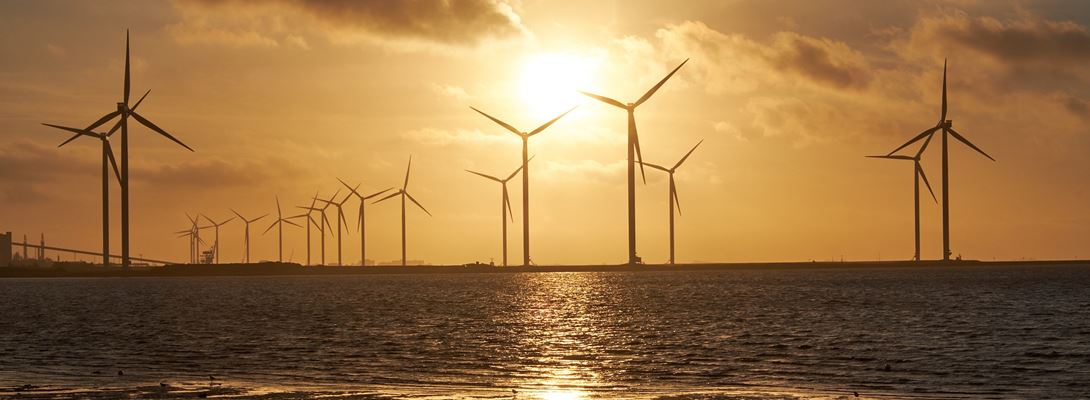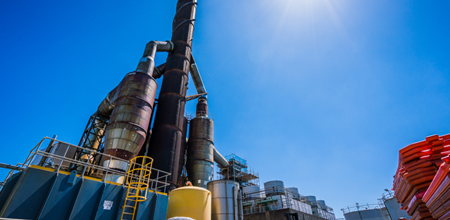What is the energy transition?
The energy transition is all about the global energy sector shift from the polluting fossil-fuel system of oil, gas and coal to a cleaner, more sustainable future powered by renewable and low carbon forms of energy.
The key word here is transition: this isn’t an overnight process. And every positive move comes with its own unique set of challenges. These can and will be overcome, but we’re all entering an exciting new era and need to make sure it’s done properly. This takes time, investment, and forward planning.
Each year, we become more accustomed to a world powered by electricity. Even the traditional motor car is now becoming less engine and more car as the fuels which drove the last century are being replaced with electricity.
A sticking point with transitioning to electricity is the ability to deliver enough of it where - and more importantly, when - it’s needed, as efficiently as possible. This involves an upgrade of the power system on a massive scale to bring enough power into everyone’s home, accounting not just for today’s demands, but for those we anticipate in the future too. For example, a few decades ago, heating systems were almost entirely fossil-fuel powered. Today, Guernsey Electricity alone receives over 60 calls a month from enquirers wishing to make the switch from gas and oil.
The world is responding to the negative impact of climate change. As we all try to help combat global warming by switching out oil heating, moving to electric cars, or installing smart home systems, more demand is placed on the electricity network than it was originally designed for.
What you need to know about applying for more electricity to power your future needs
In Guernsey, electricity is fed directly to your home through an underground cable network. This maintains the beauty of our Island landscape as there are no overhead electricity lines. Everything powering our lives is neatly buried below ground, working quietly beneath our feet.
Similar to a plug extension in your living room, these underground cables have a limited capacity. The more people ‘plug in’ to the cable supplying your area, the less electricity is available for your property. This can mean that in some instances, without a supply line cable upgrade, there simply won’t be enough electricity left in the cable to supply your property.
Buried electricity cables take time to dig up. And excavating areas to gradually upgrade the electricity network while ensuring minimal disruption to our bustling modern Island life adds even more time to the transition. Works can also be delayed because of road embargoes, development permissions and the training of skilled joiners and engineers to do the necessary upgrades that are in increasing demand. Some locations also need agreement from all residents before an upgrade can go ahead.
But the good news is, with proper planning and accurate additional load assessments, these upgrades today will serve us far beyond this transition period. There is no benefit in cutting corners, and time spent on additional load assessments now will pay off to help achieve a reliable network to power our future.
The cable connecting your own property to the local area network may be small in capacity, as it’s never had to supply a large amount of electricity before. Now that the world is transitioning to greater electrical demand, more properties will need bigger cables in order to have enough power. If you only had one lamp in your lounge, you’d only need one plug socket. But when you want 3 lamps, a TV and a WiFi router in one room, you’d need to pay for more sockets to be installed. This is similar to the situation we face, but on a much larger scale.
None of us know just by looking at the ground how much capacity there might be to supply a property. This is why an ‘additional load application’ is sent to Guernsey Electricity each time work such as an electric heating upgrade, electric car charging unit above 3.6kW or re-wiring for an extension is needed. Engineers with the right expertise can then assess the high and low voltage cable network to establish how much capacity you currently have, and how much extra you may need in future.
Nobody wants a heating system that only works when everyone else has got their appliances switched off.
As more and more people want to power their home heating and transport with electricity, we’re receiving more and more applications to assess the capacity of the power supply to their property.
How long does it take?
The average number of load applications received recently has been 1200 a year, and during 2022 alone we’re predicting a 30% increase - which means a huge amount of assessment to be done.
Between 2019 and 2021 we saw over 3,600 applications. And during 2022 we’re predicting 1550 compared to the last 3-year average of 1200. Furthermore, as many of these enquiries are for ‘high load’ requests to power, for example, whole house electric underfloor heating they can require more in-depth investigation than in the past. It is also possible that your application may have to be partially accepted, and in these cases additional time is spent exploring alternatives with you or your installer.
More people are choosing to renovate homes rather than buy due to the prohibitive cost to buy property in Guernsey, which of course has an impact on how much electricity that property will need tomorrow which it didn’t need yesterday.
Put simply, there are far more applications to process than there used to be.
What are we doing about it?
Assessing the cable infrastructure and the capacity to supply a property, particularly a large property with a more complicated need for electricity can’t be done by a student intern. It needs qualified and experienced engineers to understand what’s needed, as well as a deep understanding of the whole power grid and how the various high and low voltage systems interact with one another. It takes time to become knowledgeable enough to visit a property and understand what’s needed to fulfill electricity needs, perhaps for the next decade or more.
We’re taking on and training people to help speed up our customer’s waiting time so they can get the electrical products they need as soon as possible. We know how important it is both to have the appliances you need in your home and to reduce greenhouse gas emissions as quickly as possible, and we’re working hard to make sure we’ve got enough expertise to meet this exceptional demand.
It’s a good news story really as we see the demand for electricity increase as more people turn to electric solutions to provide low carbon and renewable alternatives to fossil fuels, but we recognise the need to get the applications processed quicker.
What else is happening?
- Road works are a real pain and nobody likes them. But usually when there is a Guernsey Electricity van there, it’s because the electricity network is being improved or upgraded. Feel free to politely ask what the engineers are doing next time you walk past.
- Access to low carbon electricity is also imperative. The electricity strategy set by the States of Guernsey will set the direction in terms of Guernsey’s access to low-carbon electricity.
And there is more happening every day behind the scenes as we help the island transition to a cleaner, more sustainable place to live.
What can you do?
Have you ever had to submit planning permission? You’ll know that to develop something worthwhile for your property, it takes time to process. For each property that needs an upgrade, there is a team of people working behind the scenes to help you get this.
- Plan ahead. Where possible, don’t leave upgrades to the last minute. Some of our most satisfied customers have worked a year or two in advance, carefully planning out where they want their upgrades and understanding the timeframes to make sure it happens to their schedule and budget. This type of strategic investment planning in your property will also help you plan around lead times for builders, installers and other trades as they can also prepare for your work well in advance.
- Install a smaller car charging unit. If you’re thinking about having an electric car charging unit installed, you can skip the additional load application entirely if you have one installed that is 3.6kW or lower. For the average driver, this is enough to gently charge a vehicle overnight between 11pm and 5am with enough to power your car for most of the week.
- Home insulation. A heating system only ever needs to replace the amount of heat lost from your property. The more heat it loses, the more electricity is needed to power the electric heating system. This electricity also needs to be paid for - so insulating a property is also a brilliant long-term investment that could save you thousands of pounds in running costs.
- If you believe your installation is critical, please contact us directly on 01481 200700 and speak to someone from our new connections team to understand what is required and when.










